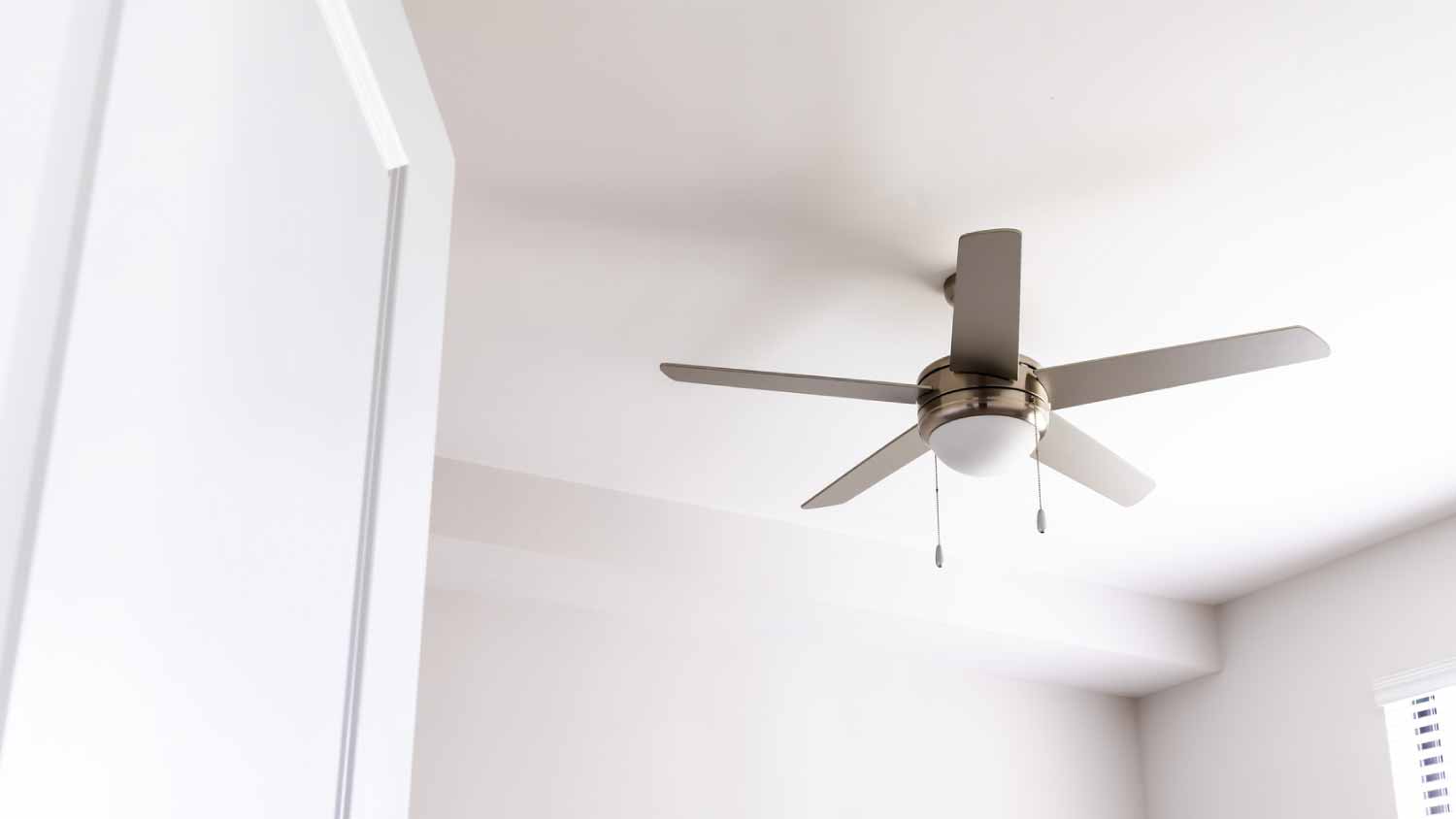Baseboard Heater Not Working? 8 Common Issues and Solutions
Stay cozy and comfortable with these effective troubleshooting tips


Many baseboard heater issues stem from a faulty heating element or thermostat.
Dust, debris, and other items crowding the heater can be a fire hazard and reduce the heater’s efficiency.
Regular baseboard heater maintenance helps prevent common issues.
Frequent repairs or changes in your electric bill could mean it’s time to replace your baseboard heater.
Is your baseboard heater not working? Baseboard heaters are essential appliances that help maintain comfortable temperatures within your home. However, there are times when they might not work as expected, causing confusion, frustration, and discomfort. Let’s explore the common issues that can arise with baseboard heaters and provide practical solutions to address them.
Components of a Baseboard Heater

Heating Element
At the core of the baseboard heater is the heating element. This component is responsible for generating the warmth that keeps your space cozy. As electricity flows through the element, it heats up and radiates heat outward, gradually raising the temperature of the room.
Fins
The fins are the distinctive metal pieces that run along the length of the baseboard heater. They play a crucial role in distributing the heat evenly throughout the room. As the heated air rises from the heating element, it comes into contact with the fins, which help disperse the warmth across the entire space.
Thermostat
Think of the thermostat as the brain behind your baseboard heater's operation. This component monitors the temperature of the room and communicates with the heating element to regulate when the heater should turn on and off. It ensures that the room maintains the desired temperature without becoming too hot or too cold.
Power Supply
The power supply connects the baseboard heater to your home's electrical system. It's the channel through which electricity flows to the heating element. Modern baseboard heaters often have power cords that can be plugged into standard electrical outlets, making baseboard heater installation costs low and setup relatively straightforward.
High-Temperature Safety Shutoff
Baseboard heaters come with a high-temperature safety shutoff sensor inside the unit. This sensor does pretty much exactly what it sounds like. When it detects temperatures rising above a normal and safe range, it automatically cuts off power to the heater, decreasing the risk of a heater fire.
Common Baseboard Heater Issues and Solutions

Struggling to get your baseboard heater working like it should? Here are a few common problems and ways you can fix them.
1. Baseboard Heater Isn't Producing Heat
Imagine that it's a chilly day, and you've turned on your baseboard heater only to find it's not emitting any warmth. This could be due to a malfunctioning heating element or a faulty thermostat. Begin by checking if the thermostat is set to the desired temperature. If it is, but the heater remains cold, the heating element might need replacement.
Consult the manufacturer's manual or a local wall heater repair specialist for guidance on replacing components.
2. Baseboard Heater Won't Turn Off
Is your baseboard heater continuing to blow hot air even when the room feels like a sauna? This is an easy-to-fix issue that often points to a malfunctioning thermostat. Test the thermostat by turning it to the lowest setting. If the heater persists, the thermostat might need calibration or replacement.
Regular calibration ensures accurate temperature control and prevents unnecessary heating, which could lead to wasted energy and money.
3. Baseboard Heater Trips the Circuit Breaker

If your baseboard heater frequently trips the circuit breaker, it's usually a sign of a few different possible issues:
Electrical overload on the breaker
Faulty wiring within the heater unit
Faulty circuit breaker
A constantly tripping breaker is typically the result of using multiple high-energy appliances simultaneously on the same circuit. For this reason, consider redistributing the load across different circuits. If the problem persists, consult an electrician near you to assess the electrical system's capacity or whether there is faulty wiring in the circuit.
4. Burning Smell or Smoke Coming From the Heater
A burning odor emanating from your baseboard heater is a concerning fire safety issue and could be caused by accumulated dust or debris coming into contact with the heating element. Turn off the heater immediately and allow it to cool for 30 to 60 minutes. Gently clean the fins and surrounding areas to eliminate any debris. If the smell continues, contact a professional to inspect the unit for potential hazards or malfunctions.
5. Heater Is on but the Room Is Still Cold
In situations where the heater is running, but the room remains chilly, inadequate insulation or drafty windows might be to blame. Check for gaps around windows and doors that could be allowing cold air in. Additionally, ensure your home is properly insulated to retain the warmth generated by the heater.
If all these issues are resolved and the room still remains too cold, there could be a clearance issue. For optimal performance, an electric baseboard heater requires specific clearances: 3 feet in front, 6 inches on both sides, and 12 inches above.
These clearances enable proper airflow, which is essential for effective heat distribution. Ensure any furniture near the heater is appropriately placed, and adjust drapes or curtains hanging too closely to the top. Maintaining these clearances guarantees your heater operates efficiently, keeping your space comfortably warm.
6. Baseboard Heater Isn’t Turning on at All
If your baseboard heater isn’t turning on, start with the big power questions. Is the room's circuit breaker still on? Is the thermostat turned on and turned up high enough to turn on the heater? If everything looks all right, take the heater's cover off and give it a close inspection. Look for any loose connections and check if the heating element is properly positioned and hasn’t been knocked loose or severely damaged.
If you can’t spot anything noticeably wrong with the system, it’s probably an issue with wiring either in the baseboard heater or in its thermostat. Make sure the thermostat is on and has fresh batteries. Otherwise, call an electrician or heating expert for a closer look.
7. Baseboard Heater Isn’t Working in Just One Room
If you have multiple baseboard heaters on the same circuit and one of them stops working, that’s a sign the thermostat has malfunctioned. We suggest taking the faceplate off the thermostat and exploring the wiring behind it to see if any specific wires have come loose or are damaged. If so, you’ll need to reconnect or replace that wiring.
If the heaters aren’t on the same circuit, take a close look at the heater itself for signs of damage or a loose heating element. If you have a hydronic system, check the zone pipe leading to the boiler to make sure its valve hasn’t been closed off. If you can’t find anything wrong, call an electrician for a better look.
8. The Baseboard Heater Is Making Loud, Strange Noises
If you have an electric system, strange noises could be the sign of a failing heating element, so you should inspect it for damage.
If you have a hydronic system and hear loud gushing sounds or deep banging noises at certain times in the heating cycle, that means a lot of air is trapped in the heater pipes and causing a water hammer or similar effect. Find the bleed valves for your heaters and open them to discharge air until water starts pouring out.
If your hydronic system makes loud bangs and groans every time it’s shut off, the pressure in the pipes is too high. Your expansion tank may have also failed, or there could be something else wrong with the boiler that requires a closer look.
Importance of Regular Baseboard Heater Maintenance
Prevention is key when it comes to baseboard heater issues. Regular maintenance, such as cleaning the fins, vacuuming dust, and ensuring proper ventilation, can prolong the life span of your heater. Schedule annual professional inspections to identify potential problems before they escalate.
When to Replace Your Baseboard Heater
Despite diligent maintenance, baseboard heaters will go out eventually, as they have a finite lifespan. If you notice a consistent decline in performance, a frequent need for repairs, or increased energy bills, it might be time for a replacement. Newer models are often more energy-efficient and equipped with advanced features for better control and comfort. Speak with a local baseboard installer to discuss your needs and costs.





- Furnace Repair
- Air Conditioning Repair
- HVAC Repairs
- Furnace Installation
- Wood & Pellet Stove Repair
- Dehumidifier & Humidifier Repair
- Heat Pump Companies
- Swamp Cooler Repair
- Wood Stove Services
- HVAC Companies
- Commercial A/C Repair
- Geothermal Installation
- Air Conditioning Installation
- Boiler Repair
- 24 Hour Furnace Repair
- Geothermal Repair
- Heat Pump Repair
- Humidifier Installation
- Thermostat Repair
- Thermostat Installation
- Nest Installation
- Heating & Cooling
- Heating Repair
- Furnace Cleaning
- Furnace Tune-Up
- HVAC Technicians
- Subcontractors
- Furnace Maintenance
- Plumbing & Heating Companies
- Wood Stove Inspection
- Mini Split Installation
- Wall Heater Repair
- Duct Installers
- How to Turn On Baseboard Heaters: 8 Tips for Running Your Baseboard Heater
- How to Turn Off Baseboard Heaters: Gas and Electric
- Who Replaces Baseboard Heater Covers? A Hiring Guide
- How to Replace Baseboard Heater Covers
- Can You Put Furniture in Front of Baseboard Heating?
- Baseboard Heater vs. Space Heater: Which is the Better Option?
- What Is Baseboard Heating? A Complete Guide
- Is Baseboard Heat Gas or Electric?
- Electric Hydronic vs. Electric Baseboard Heater: Which Is Better?
- What Is a Hydronic Baseboard Heater and Should You Have One?










